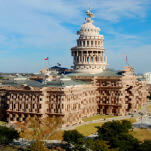Why Is The MPAA So Concerned About Male Nudity?
LatestCheck the ads for Jackass 3D, and you’ll find that the film is “rated R for male nudity, extremely crude and dangerous stunts throughout, and for language.” Wait, what?
If you’re surprised that the MPAA’s Classification and Ratings Administration is specifically calling out male nakedness in films, you’re not the only one. I couldn’t think of a previous film that had differentiated between male and female nudity in its parental guidance, so I did a little digging. Thankfully, the MPAA website, www.filmratings.com, allows you to download its data for decades into the past. I’m not that ambitious, so I decided an acceptable sampling would be the previous five years of PG-13 and R ratings.
Since 2006, 786 movies have been flagged for “nudity.”
Only three – all 2010 releases – have the warning of “male nudity”: Jackass 3D, Eat Pray Love, and Grown Ups. Zero in five years carry a “female nudity” red flag.
With Grown Ups receiving its U.S. release on June 25 of this year (and Eat Pray Love showing up in August), that was pretty compelling evidence of a change in how the MPAA is issuing information for parents. So I decided to give the organization a call to ask why men were suddenly being singled out.
Spokesman Craig Hoffman was so surprised at the question, he had to get back to me. A few minutes later he did, telling me that, well, Jackass 3D does have a lot of male nudity.
But why is that different, I asked, from the 783 films of the past five years that needed no gender descriptor for their bare flesh?
Turns out, you can blame Sacha Baron Cohen. “Parents requested specifically after the movie Brüno that we provide such information,” Hoffman says.
That mockumentary, about a swishy European fashion maven, got its hard R for “pervasive strong and crude sexual content, graphic nudity and language.” Apparently, that explicit warning wasn’t enough to scare away parents from exposing their underage children to its naughty bits. No, moms and dads instead needed to know that naked, scary men would be scarring their kids forever.
-

-

-

-

-

-

-

-

-

-

-

-

-

-

-

-

-

-

-

-

-

-

-

-

-

-

-

-

-

-

-

-

-

-

-

-

-

-

-

-








































